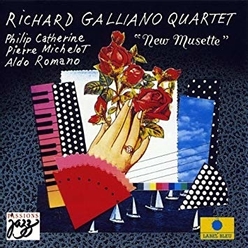
In the early part of the 1900s, the folk music of France began to change in a very big way. Paris was an enormous city with a huge population of musicians. Within the poorer street areas, musicians began to create their own world of music. In the early 1900s, the Auvergnats settled in Paris city districts and began to start their own cafes and bars. As a reult of this, the musical genre called Bal Musette was born. This term originally referred to small bars (pictured below) known as Bals musette where musicians would gather together to perform.
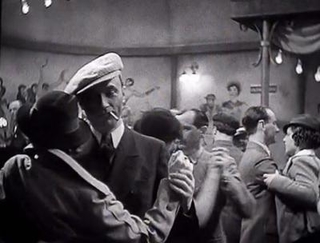
In the beginning, an instrument known as a Cabrette was quite popular, and it became known as a Musette. It was a bellows type instrument, similar to the more popular hurdy-gurdy. When the Italian musicians began to perform in the Bals musette bars, they brought with them the accordion, which replaced the Cabrette. In the first Bal Musette bars, a dance known as the bourrée was quite popular. Later, the Italian musicians introduced other dances including polkas and waltzes. It was not long before both musical styles began to conflict with each other, and the Auvergnat and Italian musical styles divided from each other. However there is no doubt that both styles influenced each other very much over time. Although many musicians and residents of the Bals Musette bars were from poorer areas, many wealthy Paris citizens began to visit the places and as a result, the Bals Musette bars became more successful.
As the Bals Musette became more popular in Paris, many musicians were becoming famous, including many accordion players. One of the earliest players to become popular was Émile Vacher (pictured), who was often known as the creator of the Bals Musette musical movement. He introduced many famous French accordion standards that include: Reine de musette, Les Troliets and Mado. Vacher was not alone in his work however, as the accordionist Charles Péguri was also a very important creator of the Bals Musette musical movement. Péguri also introduced famous French accordion standards, including his popular waltz Reproche.

The musette music world continued to grow. Many new musicians became popular and they achieved much success in Paris in the 1930s and 1940s. Some of the more famous musicians were the accordion players Gus Viseur (pictured), Jo Privat, the Colombo brothers and Tony Murena. All of these musicians began a new generation of musette music that was very popular. Tony Murena became a famous dance-band star, and Gus Viseur introduced the jazz accordion with his work with the famous Hot Club de France group lead by Django Reinhardt. Jo Privat introduced Manouche gypsy style music on the accordion along with jazz music. The Colombo brothers also composed many popular musette classics. All artists began to write music for the accordion also, and they composed several original French Musette waltzes and compositions that have become accordion standards. Some of these include: Swing Valse (Viseur), Passion (Murena), Indifference (Colombo) and Balajo (Privat). Many other styles of music also became popular and began develop in the Bals Musette bars, including Paso Dobles, tangos and javas. The Java was a particularly popular dance, which was a type of faster waltz performed in close contact with another person.
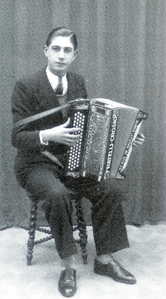
In the late 1940's early 1950's, the musette style of music continued to gain popularity in France. Many younger artists began to popularize the musette style and to enhance its' popularity. During this time, many vinyl LP records were produced, and the new generation of artists began to compose a new collection of popular French accordion standards, as well as continuing to record and perform the original standards that were introduced in the previous decades. Among the popular artists during this time were Marcel Azzola, Yvette Horner (pictured) and Andre Verchuren.
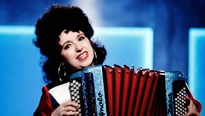
Marcel Azzola became a very famous accordion player with many famous European jazz musicians and French singers, including Edith Piaf, Stephane Grappelli and Gilbert Becaud. Yvette Horner gained fame from her performances in the Tour de France competition during the 1950's, and she also performed with many world famous artists, including Boy George. Andre Verchuren became a very successful artist in France and also in several other countries. He achieved record sales of over 70 million, and he performed at many famous international events. The work of these three artists began a new repertoire of modern musette pieces that have become standards today. Among these include Rue de la Chine, Amour de valse and Marche des mineurs. There were also many other musette artists that became very popular during this time, some of which included Emile Prud'Homme (pictured) and Aimable Pluchard. Emile Prud'Homme in particular had great success as a musette artists, often accompanying the great singer Edith Piaf and also starring in several French films.
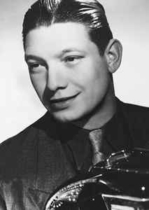
In the 1960s, the Bals Musette musical world began to decline in a very big way. The pop music world in France was very much following the popular music in other parts of the world, including America and England. Because of this, the Bals Musette music became less attractive to the younger French people at the time. However, today there is still a love for the music and it has once again become popular in France. Today there are many many musicians who continue to perform the music of the Bals Musette years. Many younger artists are also composing new musette music, and mixing this style with modern jazz music. One of the most important artists today who has revived the Musette music is the great French accordion player Richard Galliano. He has composed a number of musette waltzes that have a very modern and new Jazz style. In 1991, he released an album titled New Musette (pictured) where he performed a number of his compositions with a modern jazz style. Galliano performs many of his New Musette songs regularly during his concerts, with some of his most interesting waltzes being: La Valse A Margaux, Beritwaltz and Fou Rire.
